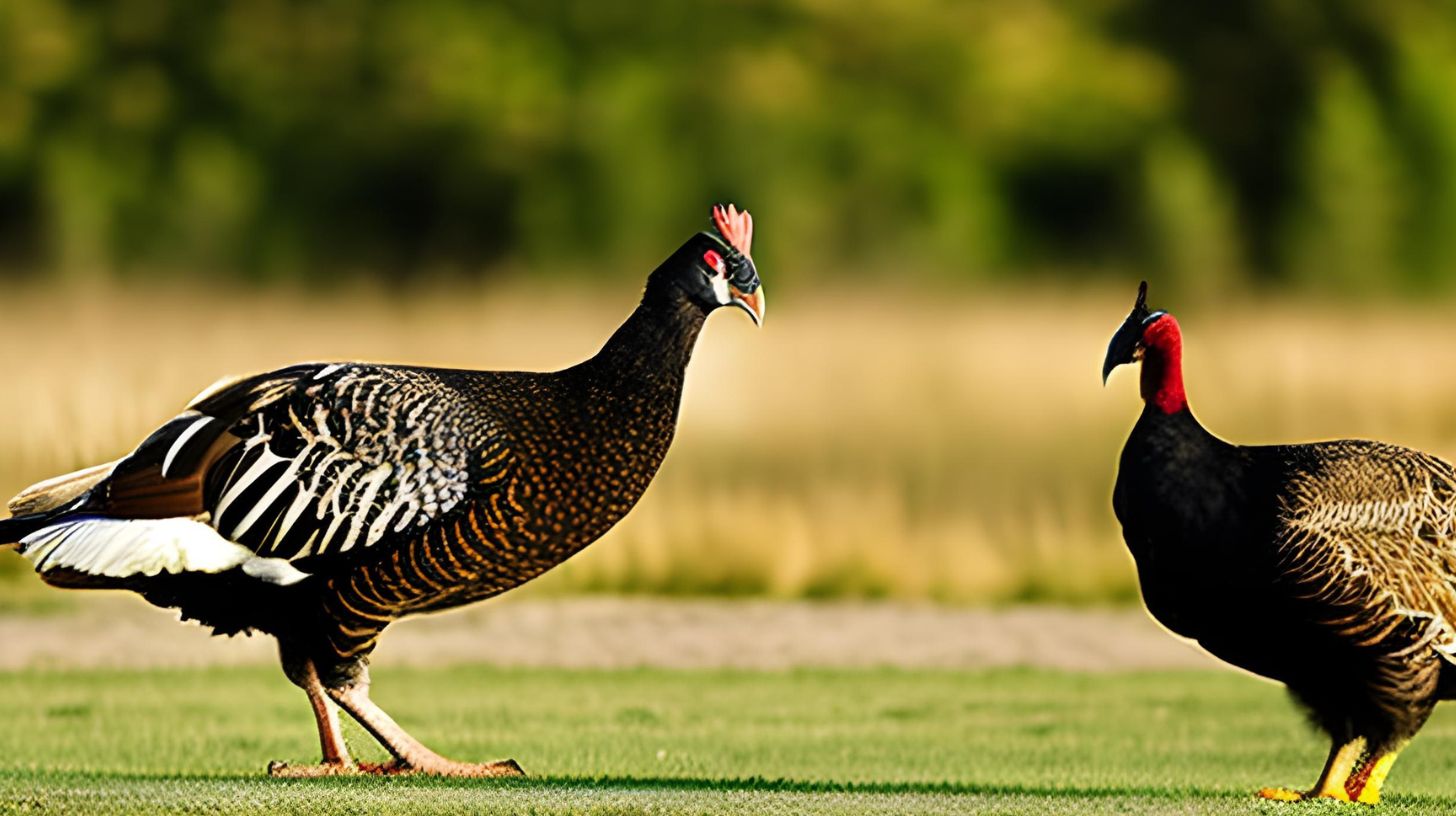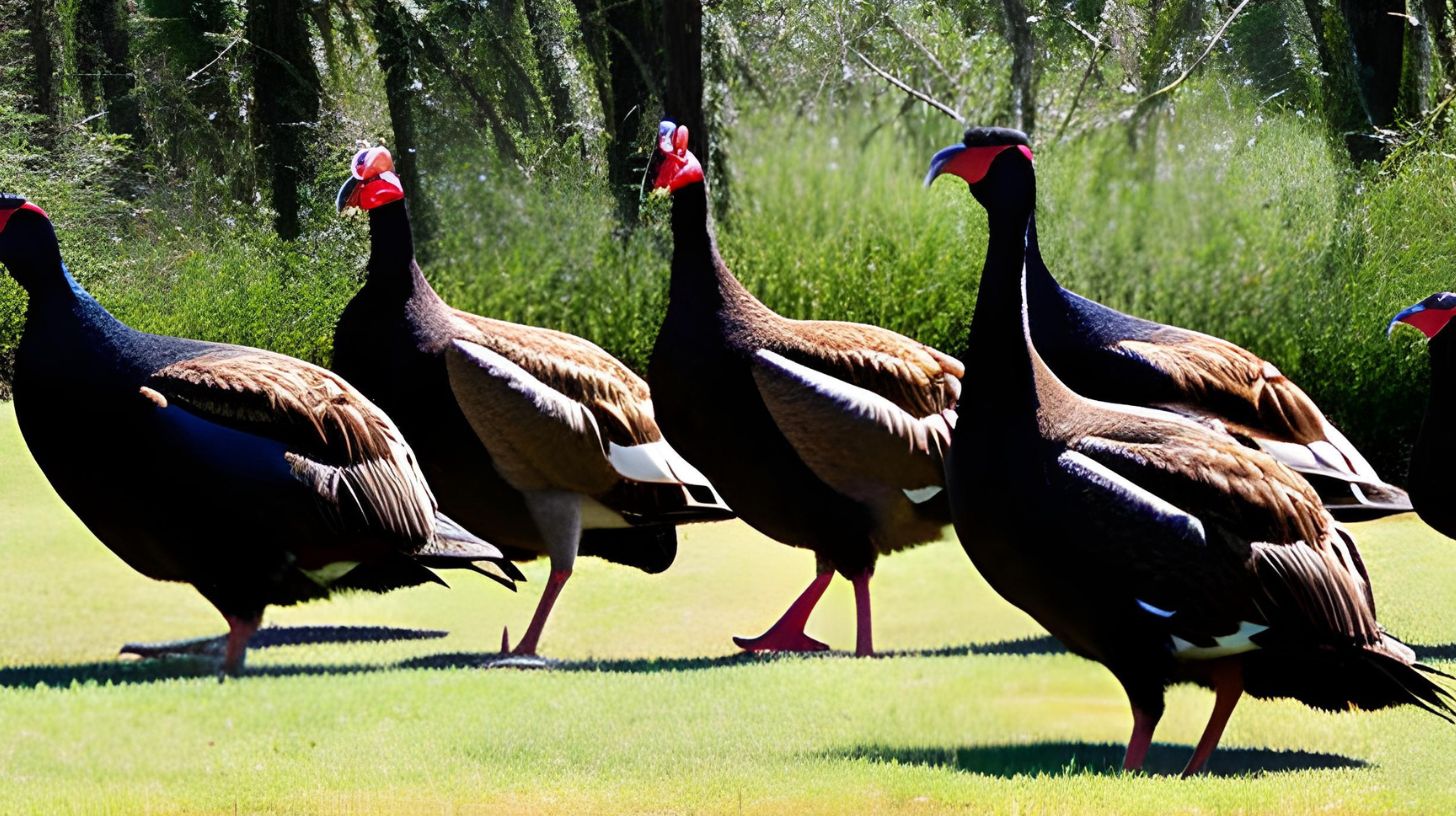What Time Do Turkeys Roost? Evening Hours Revealed

Table of content:
- What Time Do Turkeys Go to Bed?
- Do Turkeys Roost in Trees?
- Where Do Turkeys Sleep at Night?
- What Do Turkeys Do at Night?
- Do Turkeys Roost on the Ground?
- How High Do Turkeys Roost in Trees?
- Do Male and Female Turkeys Roost Together?
- Do Turkey Poults Roost With Adults?
- How Do You Find Where Turkeys Are Roosting?
- Conclusion
Wild turkeys have an innate rhythm and routine for going to roost in the evening at dusk and leaving their roosts at dawn. Their roosting habits are driven by natural instincts to find safe spots to spend the night and avoid predators.
What Time Do Turkeys Go to Bed?
Male wild turkeys, called toms or gobblers, and female wild turkeys, called hens, begin flying up to their roosting spots about 1-2 hours before sunset. The exact time wild turkeys go to bed depends on when dusk sets in.
In the spring and summer, wild turkeys will fly up to roost between 8-9 pm when darkness falls. In the winter, turkeys will roost earlier, between 6-7 pm when night comes sooner. The descent into darkness triggers the turkeys’ natural urge to seek protective roosts for the night.
Do Turkeys Roost in Trees?
Yes, wild turkeys prefer to roost in trees at night. They look for mature, old trees with large branches high up that provide cover.
Roosting in trees gives turkeys a better vantage point to spot potential predators approaching on the ground. It also helps conceal them in the canopy.
Turkeys typically roost between 20-60 feet high on sturdy tree limbs and large branches that can hold their weight. This elevation gives them quick escape access into flight.
Roost tree selection depends on the bird’s age and gender:
- Juvenile turkeys under 4-5 months old, called poults, may not be able to fly up to high branches. They often roost on lower limbs or in shrubs.
- Adult hens spend most of their time on the ground with poults so will roost lower.
- Gobblers prefer the highest roosts for better visibility.
Where Do Turkeys Sleep at Night?
In the wild, turkeys sleep in roost trees at night. A turkey’s ideal roost provides:
- Elevation high up between 20-60 ft for quick escape.
- Sturdy, mature tree limbs wide enough for landing.
- Cover from dense branches and canopy.
- Seclusion but good visibility of surroundings.
A male turkey is called a gobbler and a female turkey is called a hen. Gobblers and hens have slightly different roosting preferences:
- Gobblers prefer tall, mature trees with highest elevation perches and good visibility. Being higher up and more vigilant helps detect predators.
- Hens roost a bit lower to the ground, often 15-30 ft up, to stay near poults that can’t fly high. They choose areas with good camouflage.
Turkey flocks will also roost communally, packing many birds into one area. The birds settle onto branches in harmony, lining up next to each other along the limb.
What Do Turkeys Do at Night?
Wild turkeys are diurnal birds meaning they sleep at night. They spend nights roosted high up in trees staying as still and quiet as possible.
Turkeys have excellent night vision but cannot see well when completely dark. Remaining motionless on branches helps avoid detection.
Here are some turkey behaviors starting at dusk as they prepare to spend the night:
- Fly up into favored roost trees about 1-2 hours before sunset when light starts fading.
- Walk along branches finding an ideal spot that is sheltered, roomy and balanced.
- Settle onto roosts as quietly as possible, perching on their toenails.
- Pull their feet up close to their bodies balancing on branches using their legs and feet.
- Sit perfectly still and upright throughout the night without changing positions. They will not lie down or sleep horizontally.
- Relax their feathers and fluff up slightly for insulation through the cold night.
- Keep their eyes open scanning for owls, foxes, coyotes and other predators that hunt at night.
- Stay as quiet as possible, not calling out until fly-down at dawn.
Do Turkeys Roost on the Ground?
While trees are ideal, wild turkeys will sometimes roost on the ground in a pinch. Hens may stay on the ground to brood poults that cannot yet fly up to limbs.
In poor weather when flight becomes risky, the whole flock may stay earthbound. Turkeys forced to roost on the ground will tuck themselves into bits of cover like brush piles, dips or slashings.
Ground roosting lacks security since turkeys are more exposed to predators. Their survival depends on picking spots with good concealment from coyotes, foxes and other threats.
How High Do Turkeys Roost in Trees?
Wild turkeys roost in trees at various heights depending on age, gender and ability:
- Poults under 4 months old roost near the ground around 5-15 feet up. They are unable to fly high initially.
- Juvenile birds between 4-5 months old can reach 10-30 feet.
- Hens often roost 15-40 feet up to stay near poults and have cover.
- Gobblers roost the highest – between 35-60 feet up seeking good visibility.
Some factors impacting roost height:
- Tree maturity – Old, sturdy trees with large branches support highest roosts.
- Canopy density – Thick, layered canopy provides more concealment lower down. More open canopy exposes birds higher up.
- Predator threats – Areas with more predators push birds to roost higher up farther from reach.
- Weather hazards – Cold, rain or snow may lower roost height for insulation and stability.
Do Male and Female Turkeys Roost Together?
Gobblers and hens frequent the same general territory but usually do not roost in the exact same trees. However, there are times when the sexes comingle on shared roosts:
- In winter, turkey flocks intermix more and communal roosting is common for shared warmth. Mixed flocks may continue roosting together in early spring.
- During the spring breeding season, gobblers seek out hen roosts and will fly up to join them. Hens then leave to avoid mating.
- In summer, gobblers, hens and poults may roost in the same vicinity for protection though not necessarily the same trees.
- At night when predators abound, the whole flock may crowd onto shared roost trees for safety in numbers.
But typically, gobblers prefer roosting with other males and hens with poults prefer female company. Segregated roosting is the norm outside mating season.
Do Turkey Poults Roost With Adults?
Wild turkey poults – baby turkeys under 4 months old – will roost near adult hens for the first few weeks after hatching. Young poults are unable to fly up very high into trees initially.
Hens will choose lower roosts 15-20 feet up to stay close to poults during the early brood-rearing phase. This also provides poults easy access to the ground to feed.
As poults grow over their first 4-5 months, they gain greater flight ability and start roosting semi-independently at slightly higher perches around their mothers and siblings.
By 5-6 months of age, most juveniles can fly up 30 feet or higher to join adult birds on usual roost branches. From there they join the flock’s roosting behavior patterns.
How Do You Find Where Turkeys Are Roosting?
Here are some tips for locating wild turkeys’ roost sites:
- Scout areas around dawn and dusk when turkeys are moving to/from roosts. Listen for turkey calls and look for flight patterns.
- Follow trails of turkey tracks or droppings on the ground which often lead toward roost trees.
- Scan for disturbed leaves, soil and flattened grass caused by turkeys’ wings beating on take-off.
- Look for turkey feathers, droppings and signs of activity under potential roost trees.
- Note trees that have wide, lower branches large enough to support turkey landings and take-offs.
- Focus on mature trees in secluded areas away from disturbances.
- Favorite roost trees are often used for years, so keep an eye on the same trees over time.
- Use trail cameras near likely roost trees to pattern turkey movements and behavior overnight.
Conclusion
Understanding when and where wild turkeys prefer to roost provides insights into their natural rhythms and survival behaviors. While turkey roosting habits vary across seasons, age and gender, they all follow the same innate drive to find secure spots to quietly spend the night and evade predators. Their synchronized, ritual flight up into the trees at dusk represents generations of evolution to survive and thrive.
Welcome. I’m Adreena Shanum, the proud owner of this website, and I am incredibly passionate about animals, especially poultry. I founded adreenapets.com as a labor of love, stemming from my desire to share my knowledge and experiences with poultry enthusiasts worldwide.




